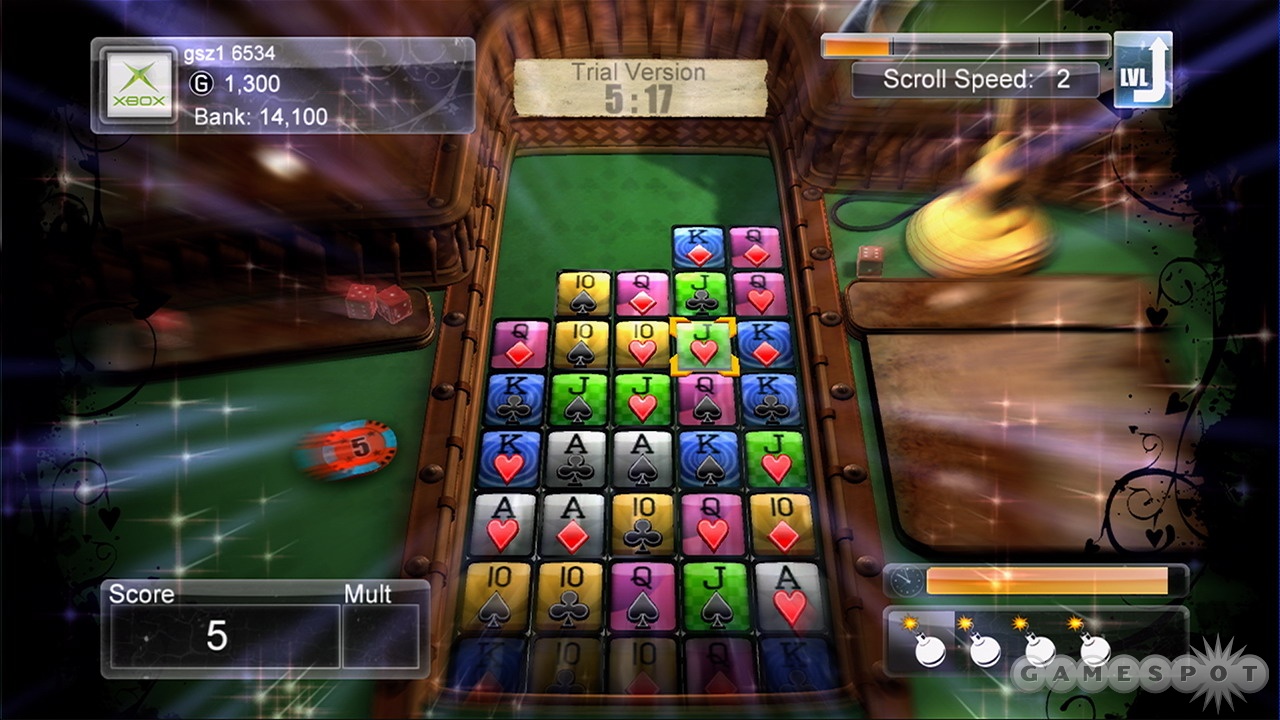Poker Smash is a terribly misleading title for a game that has less in common with Texas hold 'em than Bejeweled. Don't let the name or the 52-card aesthetic fool you--this is a puzzle game, straight up, and though the pieces all look familiar, Poker Smash assembles them in a way that feels fresh.
Actually, even more than Bejeweled, Poker Smash is reminiscent of Tetris Attack (or Panel de Pon for you Japanese importers), which is to say it's almost exactly like Tetris Attack. You're presented with a grid of tiles, and you can slide individual panels horizontally to make sets of three or more similar tiles to clear them. New tiles are constantly pushing up into the field from the bottom, so speed is a factor as well. Derivative, yes, but it's a strong foundation for a puzzle game nonetheless. What sets Poker Smash apart and what really makes it interesting as a puzzle game is the way it applies the rules of poker to the gameplay. Rather than just matching tiles with simple symbols, the tiles are made to look like playing cards, and you can clear tiles by making various poker hands.

The genius here is twofold. The rules of poker are pretty common knowledge--if you know how to play poker, you know how to clear tiles in Poker Smash. Additionally, it provides you with a lot more options than just "match the shape" for clearing tiles, which has the net effect of making this an extremely fast-paced puzzle game right from the start. If you don't know the rules of poker, this might initially sound intimidating, but the game simplifies things by limiting the cards from ace to 10. Once you understand what a flush, a straight, and a full house are, you'll be good to go.
Keeping with the poker theme, you'll earn more points for bigger hands. You can also take your winnings to the in-game Poker Smash store to buy new background themes, gamer pictures, and more. The real way to get your score up, though, is by chaining together hands and creating specific hands that the game will intermittently challenge you to make, both of which can be tough to pull off on the fly. In an interesting design choice that complements the speed of Poker Smash, you'll primarily use the two analog sticks to play. The left analog stick controls your cursor and the right stick effects where the selected tile will move. It's a seemingly simple choice that helps make the action feel more fluid. Beyond the analog sticks, when things get too hectic, you can hold the right trigger to slow down time momentarily. Alternately, you can hold the left trigger to speed things up. If a specific tile is keeping you from making your hand, you've got a limited cache of bombs that you can use to clear out any offending tiles.
The modes of play in Poker Smash are pretty standard for a puzzle game, but they serve the gameplay well. On the single-player side, there's a practice mode, a timed mode, and a "play until you die" mode. There's also a puzzle mode, which presents you with a static, preset field of tiles, and the challenge is to figure out how to clear every last tile from the screen. As you might imagine, the puzzle mode gets real hard, real fast. Poker Smash can also be played both locally or over Xbox Live with up to four players, and though there aren't a lot of options here, the core gameplay works well against other players.
When you wrap this fun amalgamation of poker and puzzle games in a clean--if sometimes thematically disparate--presentation, you've got a package that does a good job of justifying its $10 price tag.